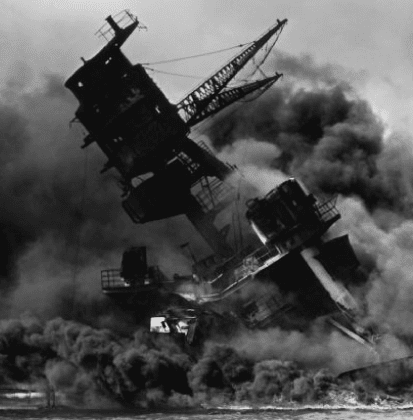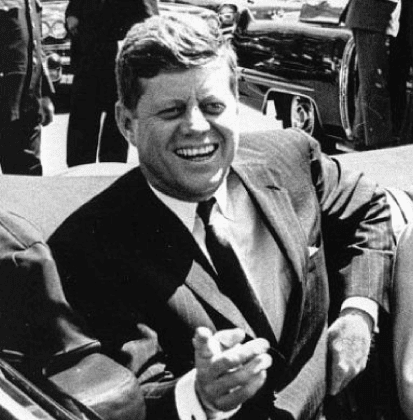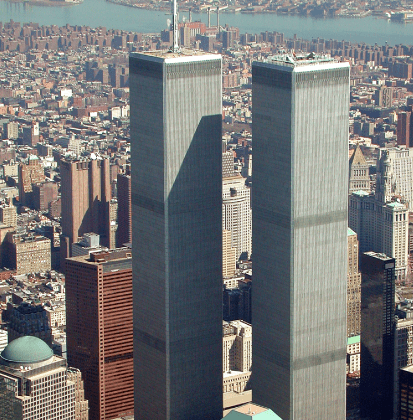For more than a century, presidents have created advisory groups (also called committees, commissions, boards, blue ribbon panels, or task forces) to advise them on particular issues. Typically the group’s task is to analyze a situation, give an explanation for the cause of the problem, and make recommendations for change.
Presidential commissions have been used to provide information on all sorts of catastrophes, scandals, and other domestic and foreign issues. There have been many famous advisory groups, a number of which have concluded with controversial findings.
Learn about five of them with HeinOnline’s Reports of U.S. Presidential Commissions database.
About Reports of U.S. Presidential Commissions
Named to the 2018 List of Best Historical Materials
Reports of U.S. Presidential Commissions and Other Advisory Bodies: A Bibliographic Listing is a unique resource containing the most current and extensive listing of publications created by these types of presidential advisory bodies. The resource is essential in discovering and analyzing policies of U.S. presidents, as presidential commission reports help determine administrative and political priorities of various administrations.
In addition to publishing the print version of Reports of U.S. Presidential Commissions, HeinOnline has transformed the resource into a crucial online archive for researchers interested in United States history, political science, and law. Whenever possible, links to the full text of reports are provided (currently clocking in at more than 1,700).
5 Controversial Presidential Commissions
1. The Roberts Commission (1941)
Authority:
Executive Order 8983
Purpose:
To investigate the attack on Pearl Harbor on December 7th of that year.
Findings:
That the chief Navy and Army commanders in the Pacific, Adm. Husband E. Kimmel and Lt. Gen. Walter C. Short, were guilty of “dereliction of duty” by not preparing the harbor enough for an air attack from Japan. The finding led to their eventual removal from command.

Resulting Conspiracy Theories:
Some claim that Kimmel and Short were used as a scapegoat by the U.S. government to cover up mistakes made by the military. Still others argue that blaming the two was really a cover-up of an alleged plot by the Roosevelt Administration to allow the attack on Pearl Harbor and launch the United States from neutrality into the fray of World War II.
Interested in learning more about Pearl Harbor? Read all about it in this blog post.
2. The Warren Commission (1963)
Authority:
Executive Order 11130
Purpose:
To investigate the assassination of President John F. Kennedy.
Findings:
That shooter Lee Harvey Oswald acted alone in the John F. Kennedy assassination. In other words, it was not clear that he participated in a national or international conspiracy to assassinate the president.

Resulting Conspiracy Theories:
Many have had significant doubts regarding the commission’s findings (including four of seven commission members), leading to numerous theories as to what really took place that November day. Some believe the assassination was actually coordinated by the CIA, the Mafia, the KGB, or even Kennedy’s vice president, Lyndon B. Johnson. In 1979, the U.S. House of Representative came to the conclusion in its own investigation that the Kennedy assassination was likely a conspiracy.
Interested in learning more about the assassination of JFK? Read all about it in this blog post.
3. The Rogers Commission (1986)
Authority:
Executive Order 12546
Purpose:
To investigate the reason for the “explosion” of the Space Shuttle Challenger.
Findings:
That a design flaw in the O-rings of the Challenger‘s right solid rocket booster caused structural failure to the shuttle, and that NASA and its contractor Morton Thiokol ignored concerns about this flaw in order to proceed with launch.

Resulting Conspiracy Theories:
Following the incident and the commission report, NASA remained highly secretive, convincing some that there was more to the disaster than the public knew. Rumors soon circulated about a “secret NASA tape” that revealed the crew’s final moments, and one crew member in particular exclaiming “I told them … I told them!” Speculation about a NASA cover-up spread, but the “secret tape” has now been determined by Snopes to be a hoax.
Interested in learning more about the Space Shuttle Challenger disaster? Read all about it in this blog post.
4. The Tower Commission (1986)
Authority:
Executive Order 12575
Purpose:
To review the proper role of the National Security Council staff in response to the Iran-Contra affair, a political scandal in which senior administration officials secretly coordinated the sale of arms to Iran while the country was under an arms embargo. The proceeds of the sale were intended to fund the anti-communist Contra group in Nicaragua, despite the fact that sending further funds to the Contras had been prohibited by Congress.

Findings:
That the Contras were used as a front to sell weapons to Iran during the Iran-Iraq War, but that President Ronald Reagan did not know of the extent of the operation. The report argued that as president, Reagan should have had a better understanding of the goings-on in the National Security Council and better control of his staff.
Resulting Conspiracy Theories:
The report revealed that President Reagan gave contradictory information when responding to questions about the affair—first claiming that he had authorized the arms deal, but later stating that he had no recollection of this. Though the report had effectively cleared Reagan, it implicated 14 other individuals—some of whom claimed that the President actually knew about and approved the entire operation. The extent to which the President was involved is still unknown, leading to much speculation.
5. The 9/11 Commission (2002)
Authority:
S. 1867
Purpose:
To provide a complete account of the circumstances surrounding the attacks of September 11.
Findings:
That the attack was carried out by 19 members of the al-Qaeda terrorist organization (led by Osama bin Laden) and that failure to act within the FBI and CIA allowed the tragedy to occur.

Resulting Conspiracy Theories:
Many criticized the commission process, pointing to conflicts of interest in members chosen for the committee and alleged political influence due to the timing of the report’s release (the summer before a presidential election). In addition, speculation circulated that the Pentagon deliberately misled both the commission and the public. Today, many conspiracy theories still abound, claiming that the United States had advance knowledge of the attacks, that the destruction of the towers was actually a controlled demolition “packaged” as terrorism, or that the Pentagon was hit by a missile launched by the U.S. government itself, rather than by a Boeing 757.
Interested in learning more about the 9/11 attacks? Read all about them in this blog post.
What about the successful mission to kill al-Qaeda leader Osama bin Laden? We have a blog post about that, too.
Need Research Assistance?
Stuck researching a topic? We’re here to help. Our HeinOnline support team is available Monday through Friday 7:30 a.m. to 6:00 p.m. ET. Call us at (800) 277-6995, email us, or chat with us!



